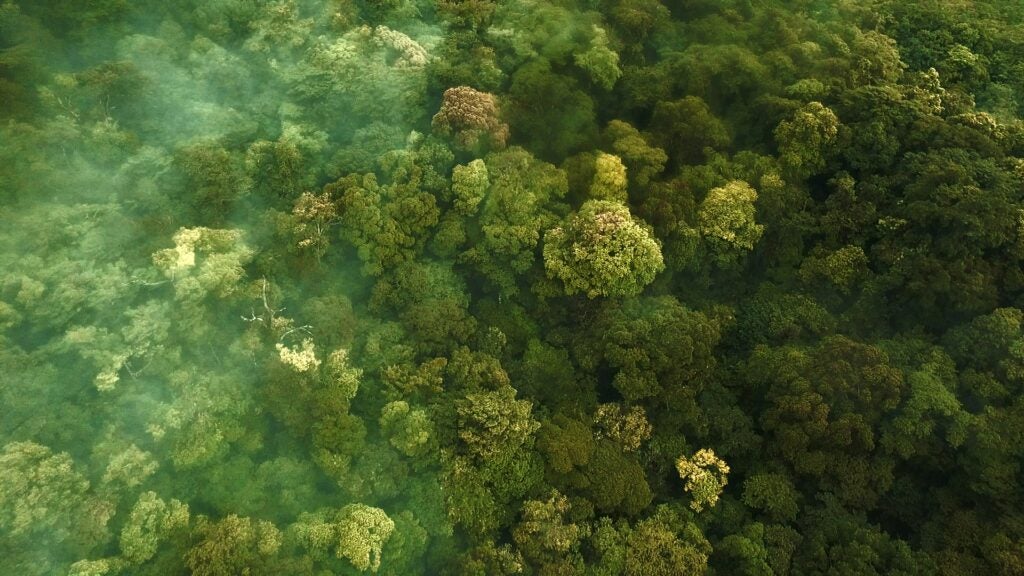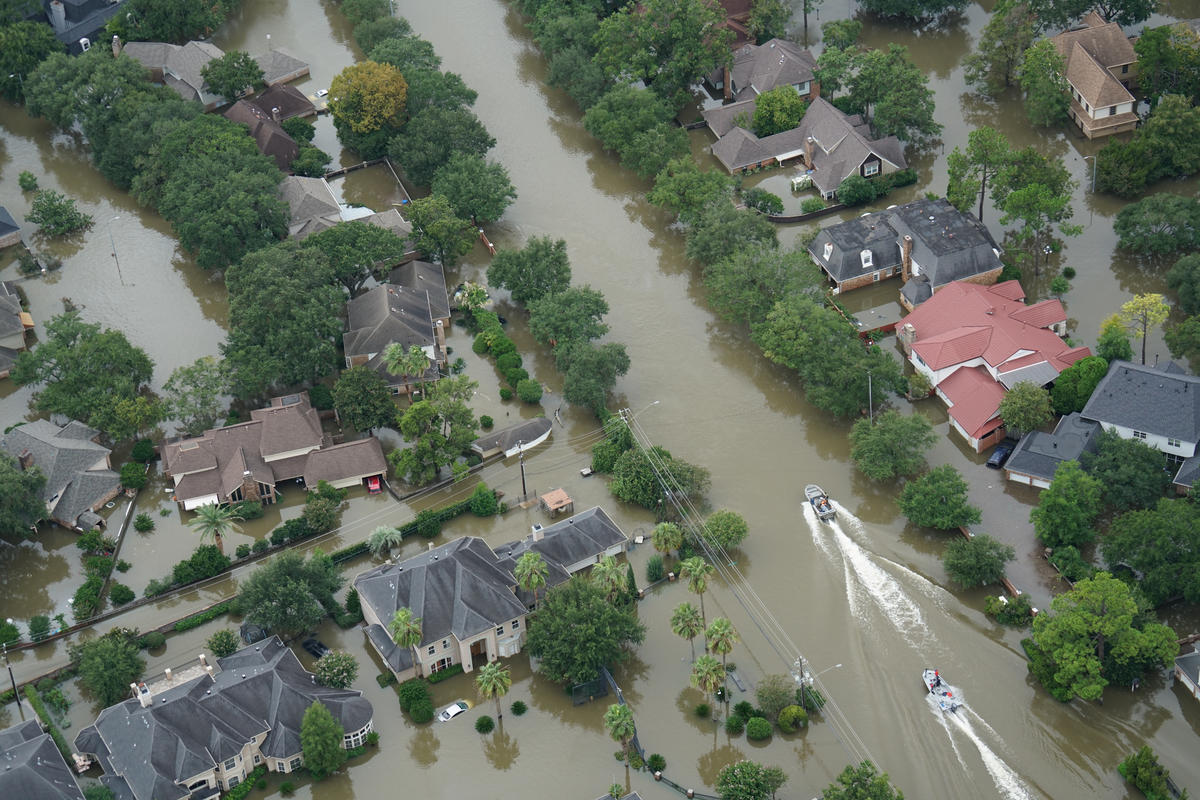Financing Forest Conservation: Guiding Quality Forest Finance in the Baku to Belém Roadmap

By Mark Moroge and Zach Cohen
At this November’s UN Climate Conference in Belém, progress on climate finance will be measured not just in pledges, but in delivery – including for forests, which are critical to regulating the climate, sustaining biodiversity, and supporting millions of people. The driving question: how do we get more money to the people conserving critical ecosystems at the speed and scale needed to make a difference?
Last year’s climate conference in Baku set an ambitious goal to mobilize $1.3 trillion by 2035 for developing countries. Over the coming months, countries will provide inputs on a ‘Baku to Belém Roadmap’, guiding public and private sectors to deliver on this target. While scaling climate finance is essential, so is ensuring its quality. Strengthening the affordability, accessibility, and effectiveness of climate funding must be priorities to catalyze transformative action.
As the Baku to Belém Roadmap takes shape, these principles of quality cannot just be abstractions – they need to be translated within specific sectors and contexts. This is especially true for the forest sector, where stakeholders face underlying barriers to securing the financing they need, and where there are ripe opportunities to unlock new resources, from leveraging public money to catalyze private investment, to deploying innovative models like the Tropical Forests Forever Facility.
Barriers to Quality Forest Finance
When it comes to financing forest conservation, one question should guide us: who is the money for? To speed up and scale support for forests, money needs to reach the agents of change working directly to protect and steward them – including local governments, forestry authorities, and Indigenous peoples and local communities (IPs and LCs). But in practice, finance doesn’t consistently reach the local actors who can drive the greatest impact. For example, while IP and LC’s steward roughly 35% of the Amazon rainforest, at the global level, they receive less than 1% of total climate finance.
Finance flows remain inaccessible for these communities, and those available often have slow dispersal times. These barriers not only constrain effective forest management but also lead to investment gaps for inseparable priorities such as cultural preservation, restoration, and bioeconomy (economic activity based on sustainable use of natural resources). Scaling quality finance for the forest sector requires addressing these challenges, particularly to create more efficient processes for getting money directly to those who need it.
Other underlying barriers in the forest sector inhibit action at scale. Public money still accounts for the bulk of forest finance, while challenges like perceived risk, unclear returns, and the lack of strong enabling environments – from poor land tenure rights to legal and regulatory uncertainty – tend to dissuade private investment. Strengthening these conditions and reducing risk are part and parcel of enabling quality finance to flow.
These fundamental challenges were validated during recent discussions within the UN Mitigation Work Programme on forest sector mitigation, where countries highlighted the need to improve means of implementation to enable ambitious action. It is clear there is untapped potential – it will be key for the roadmap to help harness it.
Forests in the Baku to Belém Roadmap
The upcoming finance roadmap offers a meaningful opportunity to build momentum for stronger quantity and quality of forest finance. As the COP29 and COP30 Presidencies begin developing the roadmap, they should consider how it can reflect material markers of progress in this direction. There are a few principal issues to keep in mind in this regard:
- How will national policies and regulations in forest-adjacent sectors advance forest conservation goals? We need to deploy the full spectrum of forest finance solutions to effectively speed and scale forest conservation, including grants, bonds, debt alleviation, equity investments, blended finance, results-based payments (RBPs) and more. To help facilitate this in an integrative manner, the roadmap should encourage alignment of fiscal and regulatory policies across the many sectors that impact forest conservation – such as economic, rural development, agriculture, and trade policy – to ensure these collectively incentivize forest conservation and are not working against each other.
- How can we diversify and scale access to forest finance using the tools at our disposal? Private investment is key within the basket of solutions – and, done right, the emerging high-integrity forest carbon marketplace is one of the few potential act-now, at-scale market instruments available to channel private finance for forests. However, compliance with the high-integrity standards sought by the private sector can take years and require significant upfront investments that forest nations and local communities often lack.
To address this challenge, we need to strengthen pathways from public provision to private mobilization. For example, forest jurisdictions that have previously accessed RBPs under mechanisms such as the Green Climate Fund’s (GCF) REDD+ window, REDD+ Early Movers initiatives, or World Bank Forest Carbon Partnership Facility (FCPF) transactions are among those best primed to transact credits with private buyers today. This suggests that a stepwise approach to diversifying and scaling forest finance could be undertaken through a phased progression from GCF RBPs and World Bank Program transactions, towards enhanced private sector demand. With GCF’s recent permanent integration of REDD+ funding, the World Bank FCPF’s transition plans underway, and the potential to scale demand for new public and private transactions via regulatory frameworks such as CORSIA and Article 6.4, there may be opportunity to support countries to accelerate funds diversification. Technical assistance and capacity building resources can bridge gaps in country compliance with these programs and help accelerate this stepwise approach.Alongside this, the roadmap should assess opportunities to streamline transaction costs and promote pricing for forest carbon that fully values the spectrum of benefits for the climate, forest communities and biodiversity while incorporating the costs of high-integrity program development.
- How do we streamline and simplify access to public funds? Lag time often exists between sovereign funding commitments and fund disbursement into multilateral investment and loan agencies. Lag time often also exists between multilaterals receipt of these funds, and their deployment for on-ground action. There are many justified reasons for this, including transparency and reporting requirements from funders, and compliance constraints that limit recipient access. Nonetheless, this lag time can result in several years of delay before forest conservation activities are initiated. We simply don’t have the luxury of several years of float in the implementation schedule, in the midst of this decisive decade for climate action and to achieve global goals of halting deforestation by 2030. To help accelerate disbursement time, the roadmap should incorporate a review of existing instruments and concretely identify roadblocks and opportunities for streamlining access.
- Can the Tropical Forest Forever Facility (TFFF) represent a new model? The TFFF is a proposed initiative by the COP30 Presidency, offering an innovative model for forest finance. In brief, the TFFF aims to pool capital from countries, financial institutions, and philanthropies to create a revenue-generating fund, and subsequently provide payments to tropical forest countries for forest conservation efforts. EDF is optimistic that TFFF can represent a step forward in affordability, accessibility and efficacy of forest and climate finance. As its design process continues, we encourage efforts to streamline and reduce the “lag” in resource distribution and corresponding transaction costs that have occurred under other global funds. We also encourage support to the TFFF to operationalize existing plans to ensure a strong seat at the design and implementation table for IP and LCs. Last, we encourage recipient governments to pursue a flexible approach to the definition of eligible activities that provides local forest change agents appropriate autonomy to advance their priority actions.
- Who pays for compliance with new forest-friendly regulations? As some countries begin implementing regulatory models to reduce deforestation in supply chains, such as the European Union Deforestation Regulation (EUDR), new questions on finance emerge. In many developing countries, forest commodity industries are dominated by informality – for example, 80% of Ecuador’s cocoa market is informal – making it significantly more difficult to comply with such regulations. For these regulations to effectively reduce deforestation and not cause undue harm on informal smallholder producers, it is critical to consider who pays to support compliance measures, as well as how capacity building financing is provided to ensure that forest-friendly regulations are inclusive and facilitative of smallholder market access and sustainability needs.
- How do we address the costs of catastrophic wildfires? The costs of integrated fire management far exceed available budgets, and the intensity of catastrophic wildfires is only increasing – with fire as the largest source of tropical forest loss in 2024 and driving record losses. It will be pivotal for the roadmap to consider opportunities to scale quality finance towards wildfire management.
The finance roadmap represents an opportunity to address these complex questions and guide all stakeholders on a path towards more efficient and effective forest finance. Delivering funding that is timely, catalytic, and targeted to local change agents can enable more ambitious action for forests and ensure countries can meet their national climate goals.












